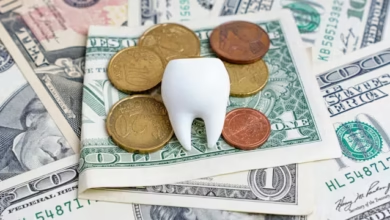Creating a Comprehensive Dental Benefits Plan for Employees

A well-structured dental benefits plan is a cornerstone of any competitive employee benefits package, offering more than just coverage for oral care. It reflects an employer’s commitment to supporting their workforce’s overall health and financial well-being. Dental plans that emphasize preventive care promote healthier smiles and help employees avoid costly and time-consuming procedures in the future.
Designing such a plan involves balancing affordability with comprehensive coverage to meet employees’ diverse needs. From basic cleanings to more advanced treatments, a thoughtfully crafted plan ensures employees feel valued and supported. This approach fosters loyalty and satisfaction and enhances workplace morale and productivity.
Key Takeaways
- Dental benefits are a crucial component of employee wellness and retention strategies.
- Understanding the needs of your workforce helps choose more effective dental plans.
- A mix of preventive and emergency dental care options is essential for comprehensive coverage.
Introduction to Dental Benefits
Dental benefits have ascended to become a pivotal component in employee benefits offerings. Gone are the days when dental coverage was a mere supplement to healthcare plans. Dental health is regarded as integral to an employee’s overall well-being. Offering a comprehensive employer dental insurance plan contributes to employee health and plays a strategic role in talent acquisition and retention, establishing a company’s commitment to their employees’ welfare.
It’s widely recognized that health benefits can significantly influence a prospective employee’s decision. Dental plans are now seen as a non-negotiable aspect of a benefits package. With the rise of informed employees, there is increasing demand for dental plans that address preventive and restorative care aligned with personal needs. Businesses that invest in substantial dental plans often find they enhance job satisfaction and reduce employee turnover.
Aligning Dental Plans with Workforce Needs
Crafting the ideal dental benefits plan necessitates a deep understanding of the workforce’s diverse needs. Demographic analysis can uncover critical insights; for instance, younger employees typically seek preventive care services, such as cleanings and routine exams, over more intensive interventions. Alternatively, employees with families might prioritize coverage for pediatric care or orthodontic work. Focusing on these variants allows organizations to choose their offerings strategically, ensuring relevance and high utility of benefits provided.
It’s equally pertinent for businesses to solicit regular feedback from their workforce. Employee surveys can highlight satisfaction levels and areas for improvement within the current dental plans. This proactive approach not only helps amend the plan to fit the workforce better but also aids in demonstrating to employees that their opinions and well-being are valued and prioritized by their employer.
Dental Awareness and Education
Embedding dental health education into the workplace can significantly enhance the utility of a dental benefits plan. Educating employees about the benefits of consistent dental care and the steps they can take to maintain optimal oral health empowers them to take a proactive role in their well-being. Companies can facilitate this through workshops, webinars, and informative newsletters.
This educational push leads to an added layer of engagement where employees are more likely to utilize their benefits fully, reducing neglect-related dental issues. By fostering a culture of health awareness, businesses enhance their benefits utilization rates and visibly contribute to their workforce’s broader health literacy.
Benefits of Preventive Care
Preventive care is the backbone of an efficient dental benefits plan. It emphasizes keeping employees healthy, minimizing the need for more costly interventions. Services like regular check-ups, cleanings, and fluoride treatments are essential in forestalling more significant, potentially more expensive issues later on. According to the American Dental Association, investing in preventive dental care leads to better oral health outcomes, reducing the incidence of severe conditions such as cavities, gum diseases, and even tooth extraction.
From an employer’s perspective, preventive care curbs long-term healthcare costs and sustains workforce productivity. Employees who maintain good oral health are less likely to miss work for dental-related issues, contributing effectively to their teams and minimizing disruptions. This facet underscores the broader business case for preventive dental care investment.
Choosing the Right Provider
Choosing the right dental benefits provider is pivotal to the success of the benefits plan. The right provider will offer more than just competitive pricing; they will provide excellent customer service and a broad network of dental professionals. Employers must critically evaluate their options, which means assessing the provider’s ability to deliver preventive services efficiently, their network’s size and reach, and the general satisfaction of their current client base.
An important consideration is a provider’s strategic role in supporting an employer’s health goals. Providers that exhibit flexibility and innovation in their service offerings—such as by integrating new technologies or expanding access points—can significantly amplify their benefits, aligning more closely with the employer’s broader health objectives.
Read more: How to Create a Blog Content Calendar for Consistent Posting
Measuring Plan Success
The ability to measure the success of a dental benefits plan is crucial. Employers should regularly evaluate data, including usage statistics and employee feedback, to optimize their benefits offerings, ensuring they remain relevant and practical to meet workforce needs.
By implementing changes based on this analysis, companies can address gaps in the coverage or improve plan aspects that aren’t meeting employee expectations. This iterative process ensures sustained employee satisfaction and engagement with dental benefits while strengthening the company’s reputation as a caring employer.
Future Trends in Dental Benefits
The dental benefits landscape rapidly evolves due to technological advancements and changing employee needs. The rise of teledentistry, for example, provides more flexible and convenient ways for employees to access dental care. This trend primarily benefits those with limited time to visit a dentist’s office in person.
Employers would benefit from staying informed about these developments to integrate relevant trends into their offerings. By doing so, they can ensure that their dental benefits package meets current demands and anticipates and prepares for future changes, ultimately contributing to a healthier, more satisfied workforce.




